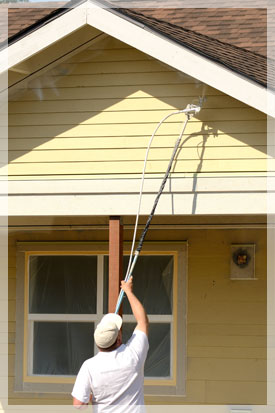When Can You Paint the Exterior of Your Home?
In Connecticut, spring weather has already arrived. Because of the early warmth, some homeowners looking to add a new coat of paint might think they can jump-start their house-painting project.
 Unfortunately, simply having a few balmy days doesn’t make for ideal conditions. Particularly, spring can still be wet from rain and have cool nights, which prevent adhesion. So, although you’ll have to wait to start your project, consider these points for finding the right time to paint your home.
Unfortunately, simply having a few balmy days doesn’t make for ideal conditions. Particularly, spring can still be wet from rain and have cool nights, which prevent adhesion. So, although you’ll have to wait to start your project, consider these points for finding the right time to paint your home.
The Start of the Season
In northern states, house-painting season usually starts anywhere from mid-March to late spring and lasts through fall. However, summer is considered the best time for adding a few coats.
Beyond the time of year, you need to look at the weather patterns. During spring or summer, try to find a few days of dry weather with little rain or humidity.
If it rains, allow at least one full day to pass before applying the paint. Any time that moisture is present, your paint may dampen, not adhere correctly or become wet from the inside.
Variable Temperatures
House painters also look for a time with few temperature fluctuations: when daytime temperatures aren’t too far off from those in the evening. Fall might end up being the perfect time to paint because of the small differences in temperature from day to night.
Many people do not realize that paint needs a minimum outside temperature. For a long time, that was about 50 degrees, but newer formulations decrease it to 40 or even 35 degrees. While the day might be a pleasant, warm temperature, if the night dips down below the 40s your paint job could still experience issues.
Considering getting your house or business painted? As the temperatures get warmer, work with a professional to start your project. To learn more or schedule an appointment, give M. Brett a call today.

 On average, your house should be painted every 15 years. Of course, location plays a part; in certain regions, expect to add a coat every five to 10. Yet, when it’s only lasting one to three years, something’s wrong.
On average, your house should be painted every 15 years. Of course, location plays a part; in certain regions, expect to add a coat every five to 10. Yet, when it’s only lasting one to three years, something’s wrong. So, before you deal with structural issues, look out for the following signs:
So, before you deal with structural issues, look out for the following signs: When a homeowner requests
When a homeowner requests